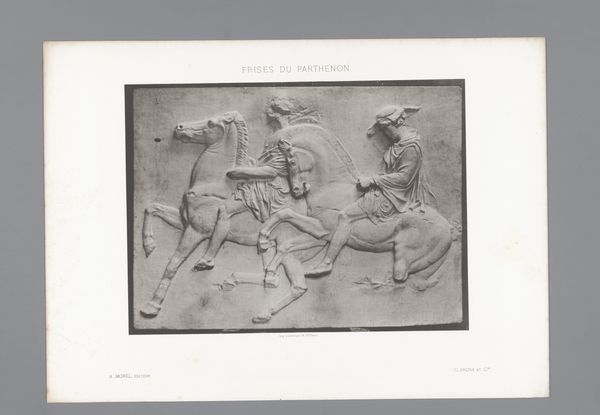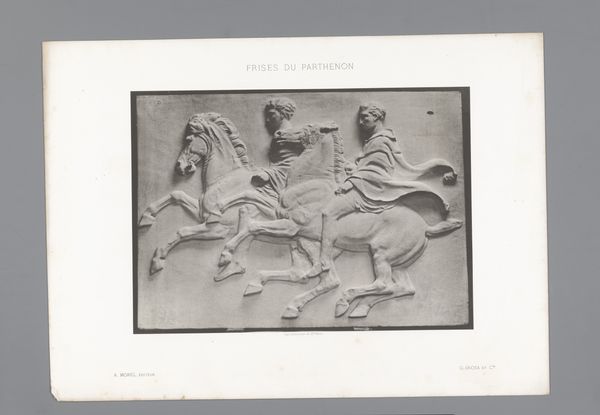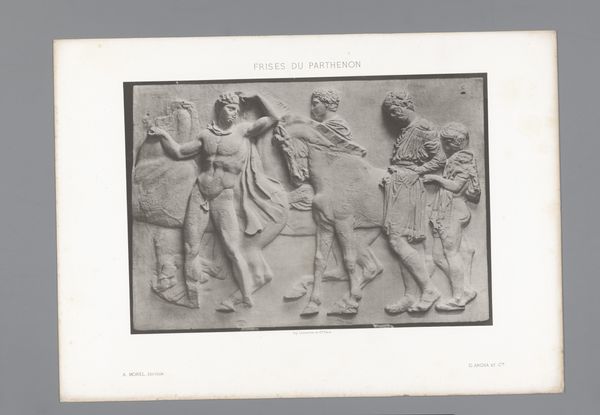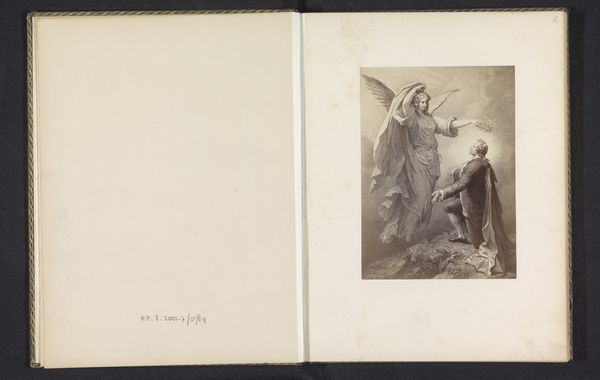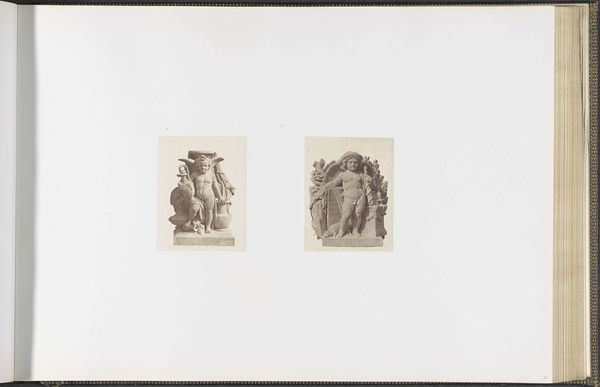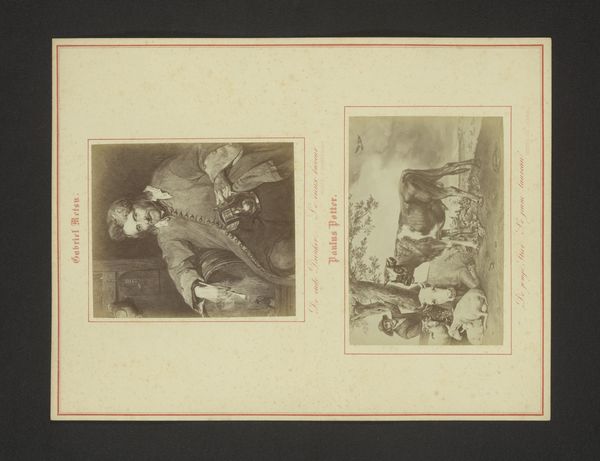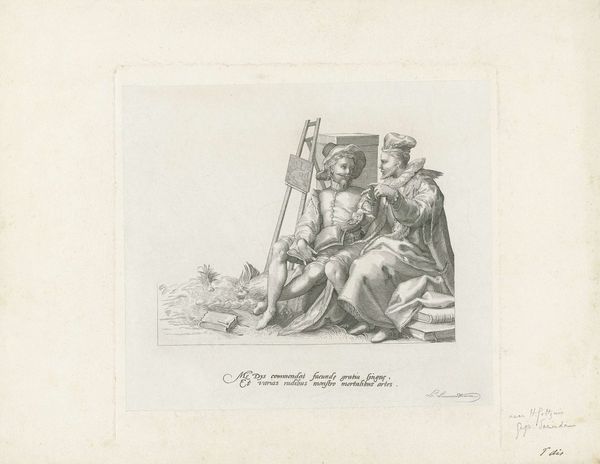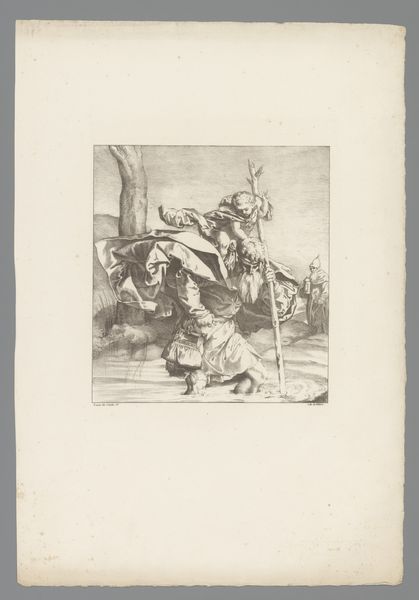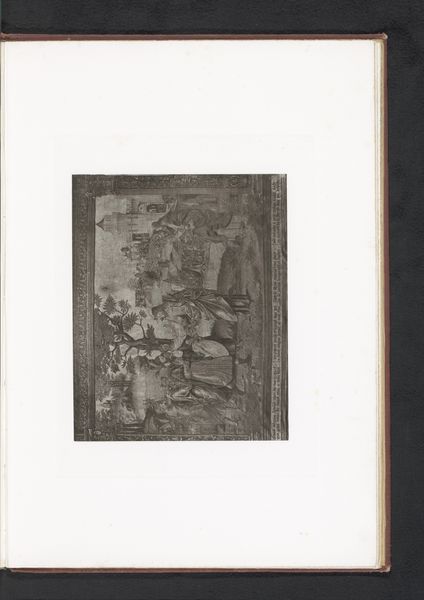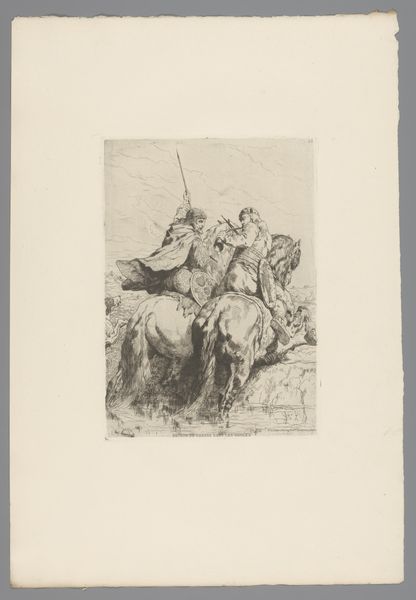
Deel van het fries van het Parthenon in Athene, afgebeeld drie ruiters before 1868
0:00
0:00
print, etching, relief, photography, sculpture, engraving
# print
#
etching
#
greek-and-roman-art
#
relief
#
landscape
#
figuration
#
photography
#
sculpture
#
history-painting
#
engraving
Dimensions: height 237 mm, width 272 mm
Copyright: Rijks Museum: Open Domain
Curator: Let's turn our attention to this compelling image titled "Deel van het fries van het Parthenon in Athene, afgebeeld drie ruiters." Dating back to before 1868, it depicts a section of the Parthenon frieze, showcasing three riders. It appears to be preserved through an etching. Editor: Wow, my first thought is the sheer energy captured! You can almost feel the horses galloping. There's this incredible forward momentum, even though it's a static image. They are hauling buns, like they are off to conquer a town. Curator: Precisely. The original frieze itself offers profound insights into Athenian society and their conceptualization of civic identity and power dynamics. Constructed during the 5th century BCE, the Parthenon stands not merely as architecture, but as a material manifestation of Athenian cultural values. It's about more than beauty; it's about politics made visual. Editor: The cool thing about seeing a version like this, captured so much later, is considering how ideas about "Greekness" shift over time, you know? It is removed by being in black and white, and almost has this stark industrial sort of aesthetic. It is kind of strange to apply that to something that used to be thought of as super flamboyant or important to civilization. Curator: Absolutely, it is an object removed. It is easy to fall into the trap of only seeing the past in these images. I like that you noted the translation and negotiation of this artwork, because a singular history it is not. We can contextualize how European powers perceived classical antiquity, utilizing its symbolism in support of empire-building. Editor: Totally. So many layers of interpretation! Makes you wonder what people will make of our art a few centuries down the line. All of our garbage, on display? The horses on these ancient blocks will seem serene by comparison. Curator: It truly speaks to the evolving dialogue between art, history, and the narratives we construct around both. The shifting sands of power always refashion art into new ideologies. Editor: It's been great digging into this with you. Always a reminder to keep questioning what we think we know, one horse carving at a time.
Comments
No comments
Be the first to comment and join the conversation on the ultimate creative platform.
